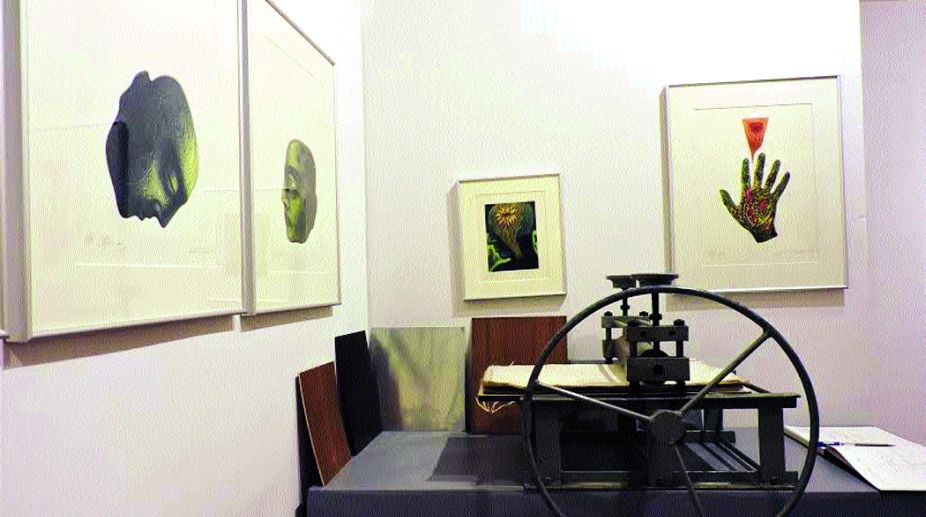My art is my therapy, says artist Neeraj Bakshi
Bakshi says animals have a special role in his theatre, as they seem to connect directly with the observer as the ardent human self, ‘breaking the fourth wall’.

Print making is the creation of art by transferring ink from a metal plate or other matrix onto a sheet of paper. In recent years, with the advent of computer graphics, different software programs, scanners and printers, the notion of printmaking has changed dramatically.
The traditional approaches have now been replaced by entirely automated leading to prints of images being created at the mere push of a button. Art Multi-Disciplines Studio, on this note, is hosting a Print-Making exhibition cum project called ‘Exordium’ to trace the establishment of print making as a regular art practice in Bengal in 1960’s to its present day condition as essentially a rapidly dying art form.
The project, curated by famous contemporary Indian artist Atin Basak, who his known for his speciality in etching and intaglio portrayal of iconic figures with peculiar gestures and expressions, also features rare works by Suhas Roy, predominantly known for his lyrical feminine portraits and Srikanto Paul, who engages in handling huge format wood cuts.
Advertisement
The exhibition consisted of a series of etchings by Atin Basak, noteworthy of which was the Untitled series which was a sort of illustrated visual trilogy showcasing three human heads with three different expressions. Suhas Roy had been one of the pioneers of the printing movement with other stalwarts at the Society Contemporary Artists graphic studio, at Dharmatala Street during the 1960s, and has been associated with the same all his life. The project is inclusive of some of his early works from that time, which demonstrates some rather innovative ideas.
For instance, there was one painting which had geometric, pyramid-like structures and two glowing orbs resembling a rather dystopian sun, and another one having a juxtaposition of rather outlandish looking creatures which could be both humans and beasts at the one and the same time. Present day art lovers are hardly aware of this phenomenal artist, hence it was Atin Basak’s honour to have been able to include some of his early works in this project to be viewed by a bigger audience, as extoled by the man himself.
Srikanto Paul’s expertise lies in wood carving, which is an extremely meticulous and labour oriented art form to perfect. The exhibition benevolently showcases some very rare works by Paul, ranging from a variety of sizes, covering a variety of subjects. Wood carving employs the method of first dipping the medium in acid, followed by precision line carving, which finally paves the way for the actual print to take form. His work dealt on multiple levels in an experimental contemporary syntax. For example, one print had a human holding an animal, both wearing gas masks, denoting the dire effects of climate change and globalisation on every living species, in noticeable traditional style of painting.
Also on display was the traditional printing machine used to print these works, similar in style to what was most probably used in the days of yore when print making started out as a nascent art form. The exhibition has endeavoured to establish an ambience of a quintessential print making studio in order to recreate a personal understanding and interaction with viewers about the various processes associated with the same.
It is indeed a praiseworthy undertaking on the part of Atin Basak to make the tech savvy generation aware about a rich culture of Bengal that is on the verge of obliteration, and one that makes for great viewing.
Advertisement